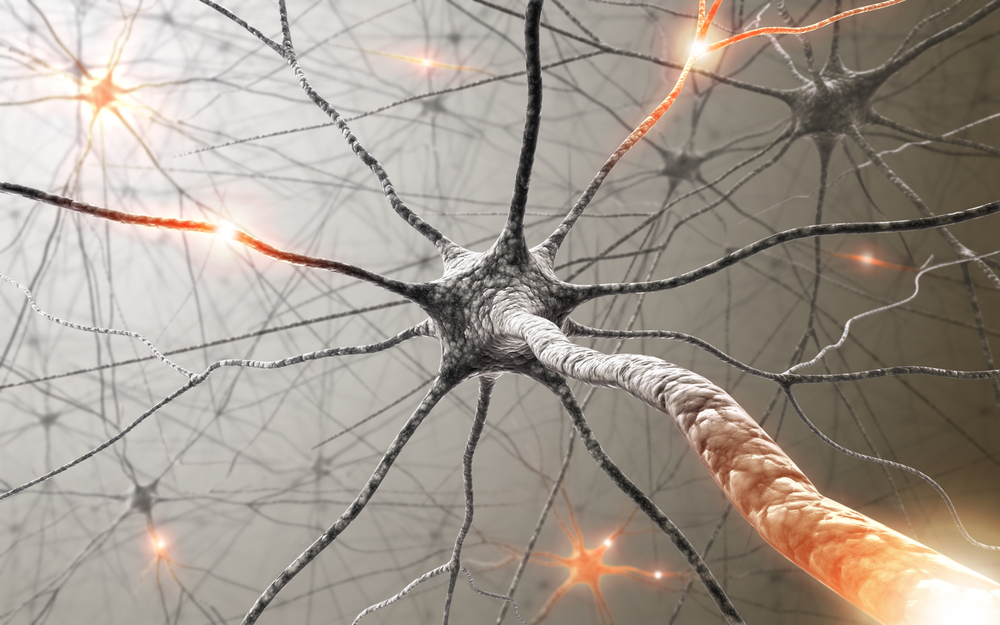Neurotransmitters are chemical messengers that relay information throughout the brain and body. Of the more than 100 currently identified neurotransmitters, only a few have been shown to have broad reaching effects within the human brain.
Here is a brief comparison of the major neurotransmitters, accompanying functions and diseases associated with dysfunction.
| Neurotransmitter | Regulated effects and processes | Diseases associated with Dysfunction |
| Norepinephrine | Anxiety
Arousal Cognitive control & working memory Hunger Negative emotional memory Pain sensation Respiration Reward (minor role) Sleep-wake cycle |
Anxiety
Attention Deficit Hyperactivity Disorder (ADHD) Cognitive difficulties Depression Fatigue Heart palpitations/irregularities Increased appetite Increased pain sensation Insomnia Memory issues Obesity |
| Dopamine | Cognitive control and working memory
Endocrine function Mood Motivation Motor system function Reward (major role) |
Anxiety
Attention Deficit Hyperactivity Disorder (ADHD) Cognitive difficulties Depression Fatigue Increased appetite Memory issues Obsessive Compulsive Disorder (OCD) Restless leg syndrome (RLS) Parkinson’s disease Poor motivation Schizophrenia Trichotillomania |
| Serotonin | Appetite
Arousal Attention Body temperature Cardiovascular system Endocrine system Emotion and mood Memory Muscle contraction Reward (minor role) Satiety Sensory perception Sleep |
Anxiety
Depression Fibromyalgia (FMS) Hormone imbalances Hot flashes/night sweats Increased appetite Increased pain sensation Insomnia Memory issues Obesity Obsessive Compulsive Disorder (OCD) Trichotillomania |
| GABA | Anxiety
Emotion and mood Memory Muscle tone/contraction Sleep |
Anxiety
Depression Insomnia Memory issues |
| Glutamate | Memory
Muscle tone/contraction |
Autism
Epilepsy Amyotrophic lateral sclerosis Alzheimer’s disease Depression Huntington disease Obsessive Compulsive Disorder Parkinson’s disease Schizophrenia Stroke |
| Histamine | Arousal
Feeding and energy balance Immune function Learning Memory Sleep |
Allergies
Fatigue Insomnia Memory issues |
| Acetylcholine | Arousal
Emotional states Learning Motor system function Muscle contraction Short-term memory Reward (minor role) |
Memory issues |
As with the study of brain function, this chart is on oversimplification of available research, as many neurotransmitters affect one another and there is often crossover between neurotransmitter systems.
References:
Rang, H. P. (2003). Pharmacology. Edinburgh: Churchill Livingstone. pp. 474 for noradrenaline system, page 476 for dopamine system, page 480 for serotonin system and page 483 for cholinergic system.
Malenka RC, Nestler EJ, Hyman SE (2009). “Chapter 6: Widely Projecting Systems: Monoamines, Acetylcholine, and Orexin”. In Sydor A, Brown RY. Molecular Neuropharmacology: A Foundation for Clinical Neuroscience (2nd ed.). New York: McGraw-Hill Medical. p. 155
Malenka RC, Nestler EJ, Hyman SE (2009). “Chapter 6: Widely Projecting Systems: Monoamines, Acetylcholine, and Orexin”. In Sydor A, Brown RY. Molecular Neuropharmacology: A Foundation for Clinical Neuroscience (2nd ed.). New York: McGraw-Hill Medical. pp. 156–157.
Malenka RC, Nestler EJ, Hyman SE (2009). “Chapter 6: Widely Projecting Systems: Monoamines, Acetylcholine, and Orexin”. In Sydor A, Brown RY. Molecular Neuropharmacology: A Foundation for Clinical Neuroscience (2nd ed.). New York: McGraw-Hill Medical. pp. 147–148, 154–157.
Malenka RC, Nestler EJ, Hyman SE (2009). “Chapter 6: Widely Projecting Systems: Monoamines, Acetylcholine, and Orexin”. In Sydor A, Brown RY. Molecular Neuropharmacology: A Foundation for Clinical Neuroscience (2nd ed.). New York: McGraw-Hill Medical. pp. 175–176.
Malenka RC, Nestler EJ, Hyman SE (2009). “Chapter 6: Widely Projecting Systems: Monoamines, Acetylcholine, and Orexin”. In Sydor A, Brown RY. Molecular Neuropharmacology: A Foundation for Clinical Neuroscience (2nd ed.). New York: McGraw-Hill Medical. pp. 158–160.
Nestler, Eric J. “BRAIN REWARD PATHWAYS”. Icahn School of Medicine at Mount Sinai. Nestler Lab. Retrieved 16 August 2014.
Barrot M, Sesack SR, Georges F, Pistis M, Hong S, Jhou TC; Sesack; Georges; Pistis; Hong; Jhou (October 2012). “Braking dopamine systems: a new GABA master structure for mesolimbic and nigrostriatal functions”. J. Neurosci. 32 (41): 14094–101.
Malenka RC, Nestler EJ, Hyman SE (2009). “Chapter 6: Widely Projecting Systems: Monoamines, Acetylcholine, and Orexin”. In Sydor A, Brown RY. Molecular Neuropharmacology: A Foundation for Clinical Neuroscience (2nd ed.). New York: McGraw-Hill Medical. pp. 167–175.
Glutamate: Seizures and strokes- PLoS Biol. 2006 November; 4(11): e371. Published online 2006 October 17. doi: 10.1371/journal.pbio.0040371 by author Liza Gross- Courtesy Public Library of Science (2006); PubMed (PMC) of NCBI, Retrieved 2013-16-13
Yang JL, Sykora P, Wilson DM, Mattson MP, Bohr VA (August 2011). “The excitatory neurotransmitter glutamate stimulates DNA repair to increase neuronal resiliency”. Mech. Ageing Dev. 132 (8–9): 405–11.
Schacter, Gilbert and Weger. Psychology.United States of America.2009.Print.
University of Bristol. “Introduction to Serotonin”. Retrieved 15 October 2009.
“NIMH Brain Basics”. U.S. National Institutes of Health. Retrieved 29 October 2014.
MIT Medlinks. http://ocw.mit.edu/ans7870/SP/SP.236/S09/lecturenotes/drugchart.htm. Accessed 11/11/2014.


